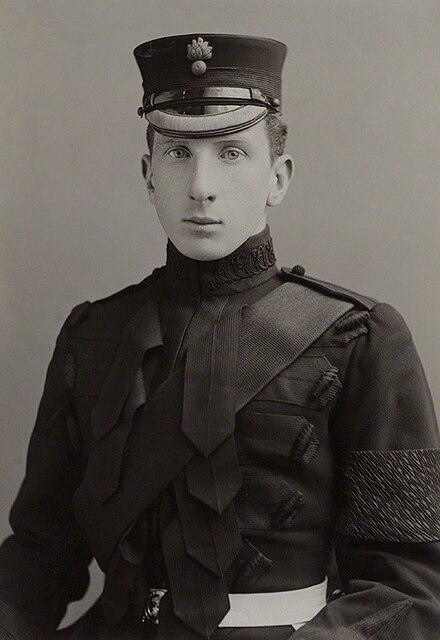Hexham is a constituency[n 1] in Northumberland represented in the House of Commons of the UK Parliament since 2024 by Joe Morris of the Labour Party. As with all constituencies, the constituency elects one Member of Parliament (MP) by the first past the post system of election at least every five years.
The seat was created as one of four single member divisions of the county of Northumberland under the Redistribution of Seats Act 1885.[2]
The second-largest constituency by land area in England (covering 250,992 hectares),[3] Hexham reaches to the Pennines and is traversed by Hadrian's Wall, which runs almost due east–west through England. It includes substantial agricultural holdings, forestry, wood processing, food, minerals, and manufactured hardware industries. In the midst of the northwest of the constituency is Kielder Water; running between this area and the middle of the seat is the southern portion of Kielder Forest, and in the west, the attractions of the precipitous Haltwhistle Burn, Viaduct and Castle. SSE of Hexham is the Derwent Reservoir.[4] As well as those rural areas, the constituency also includes part of Newcastle's middle-class suburbs.
Hexham has been held by the Conservative Party, and generally with safe majorities, since 1924. It was the only Conservative seat in the North East between the New Labour years in government from 1997-2010, and the only one in Northumberland from 1973 until the Conservatives gained Berwick-upon-Tweed from the Liberal Democrats in 2015. It was also the northernmost seat won by the Conservatives in 1997, in what would be their worst landslide defeat at any general election of the twentieth century; with all Conservative MPs in Scotland and Wales unseated that year.[5] Despite this middle-class segment of the population, there are also some more working-class areas: Prudhoe frequently elects Labour councillors and has demographics similar to neighbouring parts of Blaydon, a strongly Labour town in the Blaydon and Consett constituency. There is also some deprivation in rural areas, particularly around Haltwhistle.
Based on the latest published old age dependency ratios, a slightly larger than average level of the population is retired.[6] In 1997, the Labour Party was very close to winning the seat, but the Conservatives retained it with a significantly reduced narrow majority of 222 votes. Hexham is considered a safe seat for the Conservative Party, having been under their control for almost a century.[7]
An estimate by the House of Commons Library puts the Leave vote by the constituency in the 2016 referendum at 45%.[8]
1885–1918: The Sessional Divisions of Bellingham, Coquetdale West, Haltwhistle, and Tynedale.[2]
The contents of the county division were defined by the Redistribution of Seats Act 1885.
1918–1950: The Rural Districts of Bellingham, Haltwhistle, Hexham, and the part of the Rural District of Castle Ward which consists of the civil parishes of Bitchfield, Black Heddon, Capheaton, Cheeseburn Grange, East Matfen, Fenwick, Harlow Hill, Hawkwell, Heugh, Ingoe, Kearsley, Kirkheaton, Nesbitt, Ouston, Ryal, Wallridge and West Matfen, and the Urban Districts of Hexham and Prudhoe.[9][10]
Rothbury was transferred to Berwick-upon-Tweed.
1950–1974: The Urban Districts of Hexham and Prudhoe, and the Rural Districts of Bellingham, Castle Ward, Haltwhistle, Hexham.[11][12]
The remainder of Castle Ward was transferred from the abolished constituency of Wansbeck.
1974–1983: The urban districts of Hexham and Prudhoe, and the rural districts of Bellingham, Castle Ward, Haltwhistle, and Hexham.[13]
The boundary with Blyth was slightly amended to take account of changes to local government boundaries.
1983–2010: The District of Tynedale, and the following wards of the Borough of Castle Morpeth: Heddon-on-the-Wall, Ponteland East, Ponteland North, Ponteland South, Ponteland West, Stamfordham, Stannington, and Whalton.[14][15]
Contents changed following reorganisation of local authorities in 1974. The area of the former rural district of Castle Ward which was now part of the City of Newcastle upon Tyne in Tyne and Wear was now included in Newcastle upon Tyne North.
2010–2024: The District of Tynedale, and the following wards of the Borough of Castle Morpeth: Heddon-on-the-Wall, Ponteland East, Ponteland North, Ponteland South, Ponteland West, Stamfordham, and Stannington.[16]
In the fifth periodic boundary review of parliamentary representation in Northumberland, which came into effect for the 2010 general election, the contents of the existing Hexham constituency were unchanged except for losing the southern part of the Hartburn ward to Berwick-upon-Tweed, and the Boundary Commission for England made only minor changes in Northumberland to take account of ward boundary changes.
In 2009, a further government reorganisation resulted in the abolition of all local government boroughs and districts in Northumberland and the establishment of the county as a unitary authority.[17] However, this did not affect the constituency boundaries.
2024–present: The City of Newcastle upon Tyne ward of: Callerton & Throckley; and the County of Northumberland electoral divisions of: Bellingham; Bywell; Corbridge; Haltwhistle; Haydon and Hadrian; Hexham Central with Acomb; Hexham East; Hexham West; Humshaugh; Longhorsley; Ponteland East and Stannington; Ponteland North; Ponteland South with Heddon; Ponteland West; Prudhoe North; Prudhoe South; South Tynedale; Stocksfield and Broomhaugh.[18]
Under the 2023 Periodic Review of Westminster constituencies, which came into effect for the 2024 general election, the constituency was expanded to bring the electorate within the permitted range by adding the Newcastle ward of Callerton & Throckley. The boundaries within Northumberland were adjusted slightly to take account of the reorganisation of local authority electoral divisions.
Colonel Douglas Clifton Brown, who was Speaker of the House of Commons during the latter years of the World War II, represented the seat for two separate tenures (from 1918-23, and again from 1924-51).
General Election 1914–15:

Another General Election was required to take place before the end of 1915. The political parties had been making preparations for an election to take place and by July 1914, the following candidates had been selected:





Craig, F. W. S. (1983). British parliamentary election results 1918–1949 (3 ed.). Chichester: Parliamentary Research Services. ISBN 0-900178-06-X.
55°02′N 2°09′W / 55.03°N 2.15°W / 55.03; -2.15